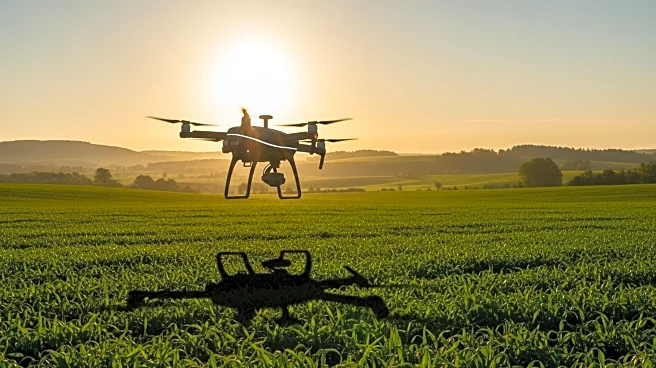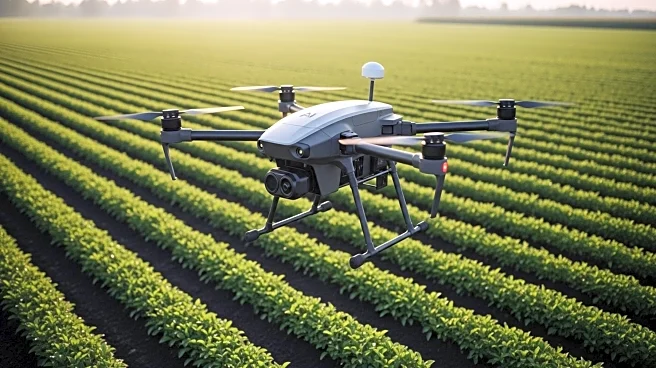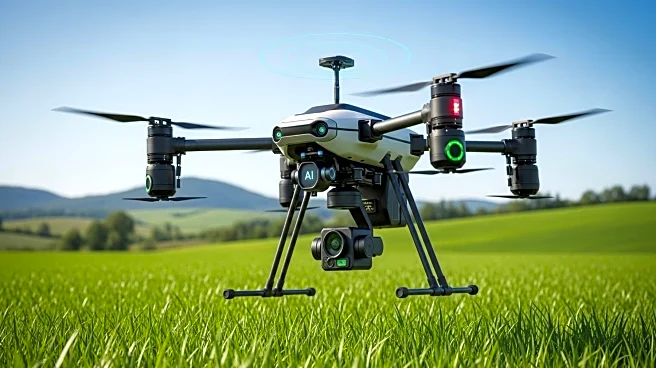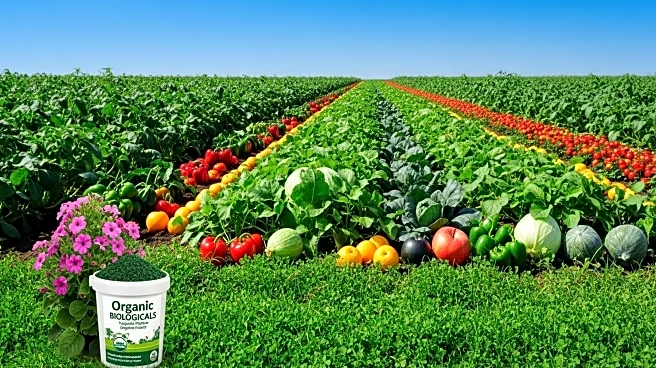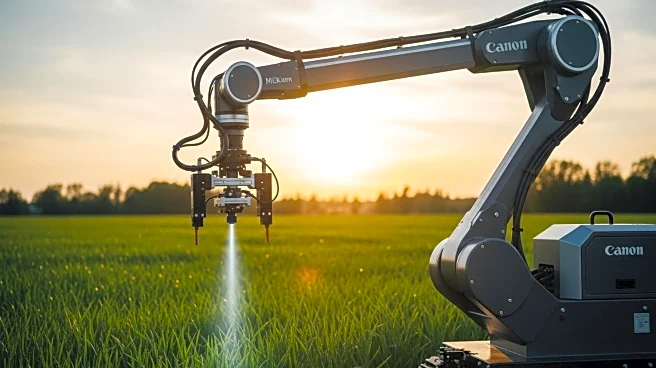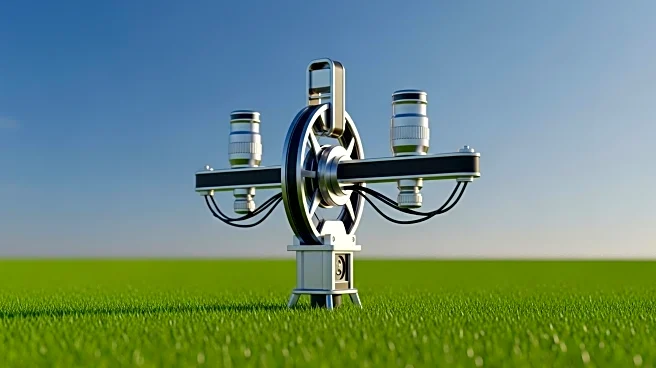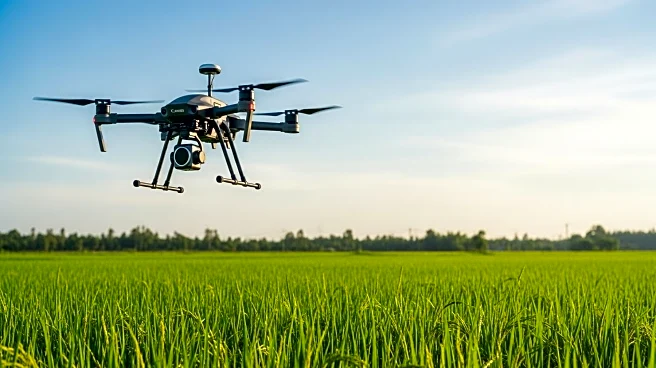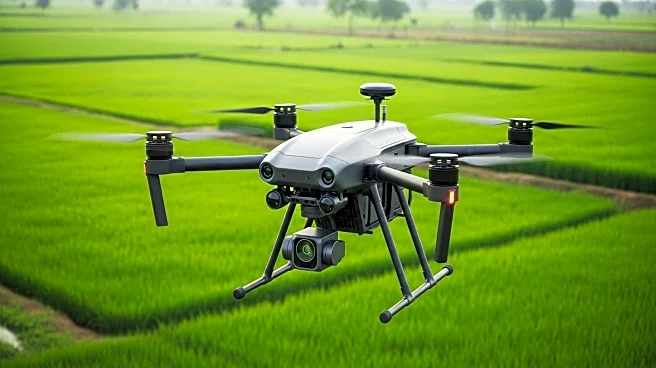What's Happening?
The Agricultural Drone Market is experiencing rapid growth, with projections indicating an increase from USD 2,943.23 million in 2024 to USD 36,546.21 million by 2032. This growth is driven by advancements in unmanned aerial vehicles (UAVs) used for crop monitoring, mapping, and precision farming. Key players such as DJI, XAG, and Yamaha are leading innovations in spraying, mapping, and irrigation management solutions. The integration of smart agriculture and artificial intelligence (AI) is enhancing the efficiency of these drones, allowing for optimized irrigation, pest control, and yield estimation through high-resolution imaging and data analytics. Governments and agritech companies are promoting drone-based solutions for sustainable farming practices, further fueling market expansion.
Why It's Important?
The expansion of the Agricultural Drone Market is significant for the agricultural sector, as it represents a shift towards more sustainable and efficient farming practices. The use of drones in agriculture can lead to reduced chemical usage, lower environmental impact, and increased crop yields. This technological advancement supports the growing demand for food production and addresses challenges such as labor shortages and climate change. The integration of AI and machine learning in drone technology allows for precise data analysis, which can improve decision-making and resource management for farmers. As the market grows, it presents opportunities for investment and innovation in the agricultural technology sector.
What's Next?
The future of the Agricultural Drone Market will likely see further advancements in drone technology, including swarm technology and autonomous operations. Regulatory frameworks are evolving to allow fully autonomous flights, which could increase the efficiency and coverage area of drone operations. Additionally, the integration of drones with farm management software will provide a comprehensive data source for farmers, enhancing their ability to manage resources effectively. As the market continues to expand, stakeholders such as agritech companies, investors, and policymakers will play crucial roles in shaping the development and adoption of drone technology in agriculture.
Beyond the Headlines
The growth of the Agricultural Drone Market may have broader implications for rural economies and employment. As drone technology becomes more prevalent, there could be a shift in the skills required in the agricultural workforce, with an increased demand for tech-savvy workers. This could lead to new educational and training opportunities in rural areas. Additionally, the environmental benefits of drone technology, such as reduced chemical usage and improved resource management, could contribute to more sustainable agricultural practices and help mitigate the impacts of climate change.

